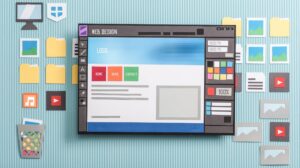When it comes to design, creating something that is visually pleasing is important, but it’s equally important to keep the user in mind. After all, the purpose of any design is to communicate a message or serve a function, and if it doesn’t do that effectively, it’s not really successful. So what are the differences between a good and a great designer?
A good designer not only knows the basics of design but also understands how to make the design intuitive for the user. This means taking into consideration the user’s needs, preferences, and behavior to create an experience that is easy to use and enjoyable. For instance, choosing the right font size and color contrast can make a huge difference in how easily a user can read and navigate through the design.
But what sets a great designer apart is the ability to not only give the client what they asked for, but also to provide something unexpected, something that the client might not have thought of. This requires taking the client’s needs and wants into consideration, but then elevating the design to a new level, creating something that is not just functional but also inspiring and delightful.
We asked FYC Labs Head of Design Brianne Fortier:
What makes a good designer and what makes a great designer?
“To be a competent designer, one must possess a solid grasp of design fundamentals and apply them in an intuitive manner that considers the end user’s needs. A good designer is capable of producing visually appealing designs while maintaining proper font sizes and color contrast.
However, being a great designer requires going beyond meeting the client’s expectations and delivering something that exceeds their initial vision. A great designer takes the client’s desires into account and elevates them to the next level by incorporating unexpected elements. This is accomplished while still prioritizing user needs and maintaining a balance between form and function.
Ultimately, a great designer is one who can successfully achieve these objectives while creating a visually stunning final product that serves the client’s goals and the user’s needs.”

At the heart of all great design is a focus on the user. A great designer doesn’t design for themselves or even for the client alone; they design for the end user, with the client’s goals and objectives in mind. By doing so, they create designs that not only look beautiful but also work well and engage the user in a meaningful way.

What are the three things to keep in mind when designing for the user?
“One important consideration is to ensure ease of navigation, as it’s crucial not to confuse or lose the user. Additionally, users typically don’t want to read lengthy paragraphs when visiting a site, so it’s essential to be concise and present information in an easy-to-read manner.
Regarding color selection, it’s crucial to choose a pleasing color scheme that does not strain the user’s eyes. The goal is for users to be able to browse the website without experiencing any discomfort or eye strain.”

Designing for the user is about understanding their needs and behavior, and creating designs that are intuitive and easy to use. But being a great designer requires taking it a step further, by giving the client something unexpected and delightful, while still keeping the user at the forefront of the design process. Ultimately, great design is about achieving a balance between aesthetics, functionality, and user experience, and creating designs that not only meet the client’s objectives but also delight and engage the user.
You May Also Like:
Design Lab: Designing Your Vision and Bringing Your Ideas to Life
The Art of Collaborative Creation in Client-Centered Design
Connect with Bri on LinkedIn!